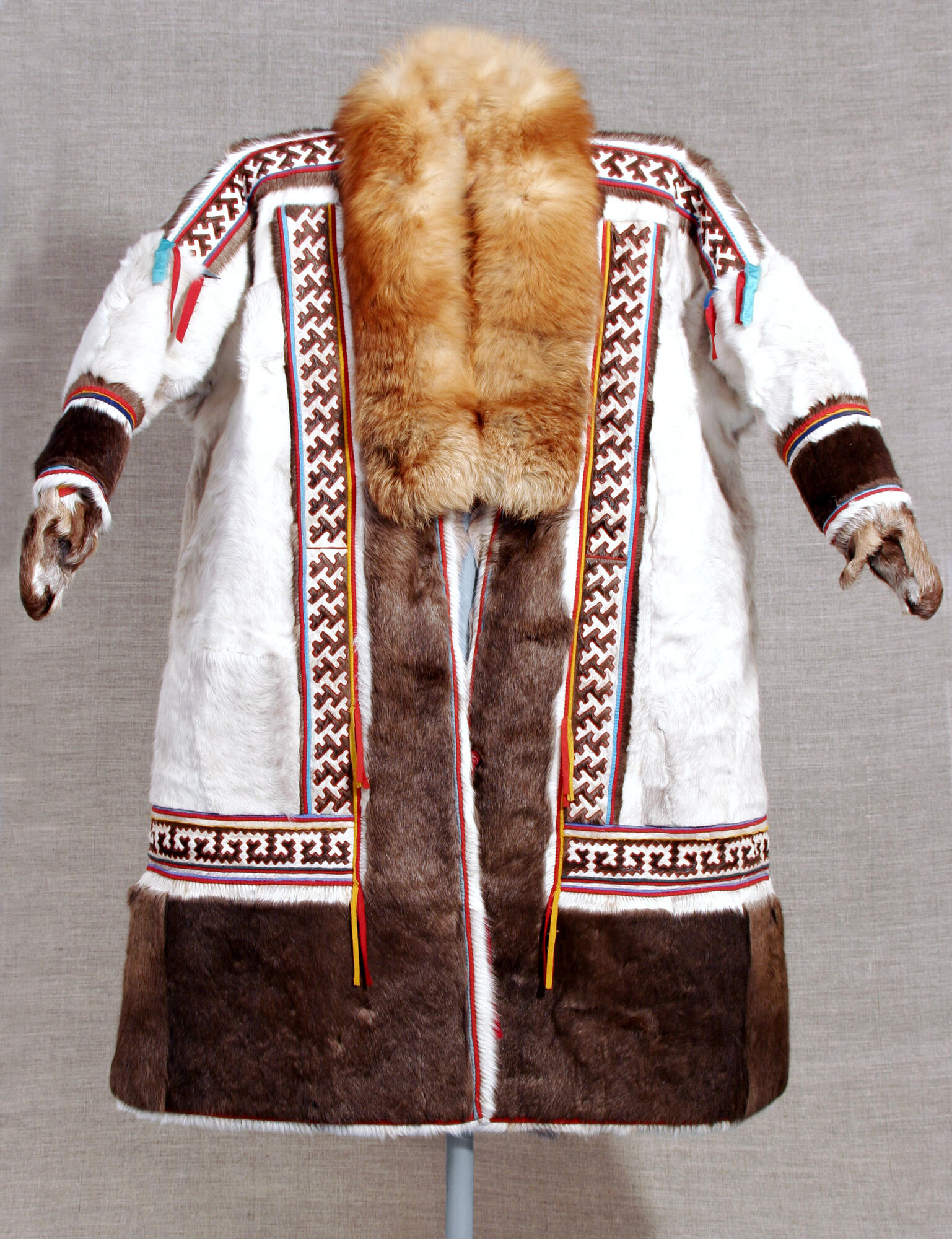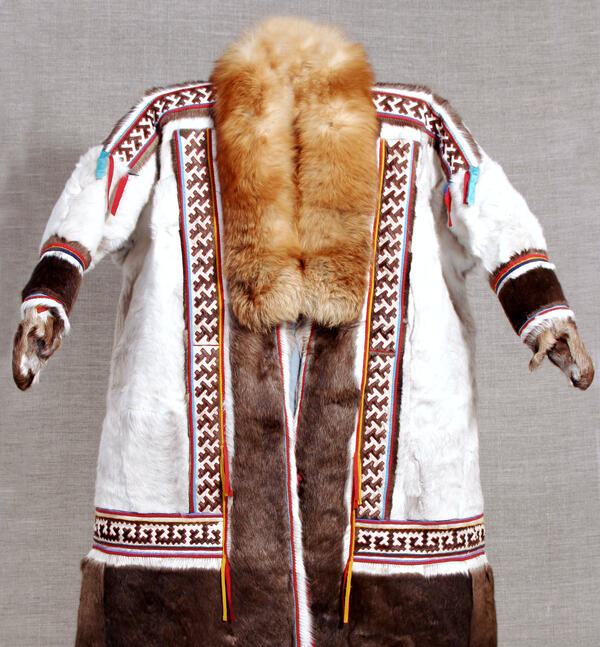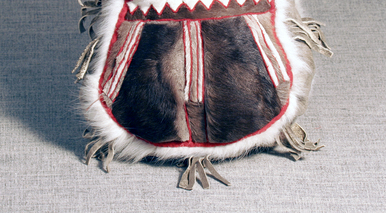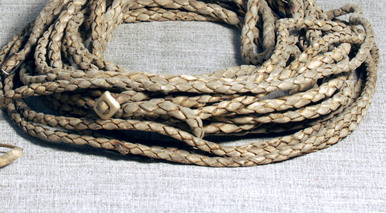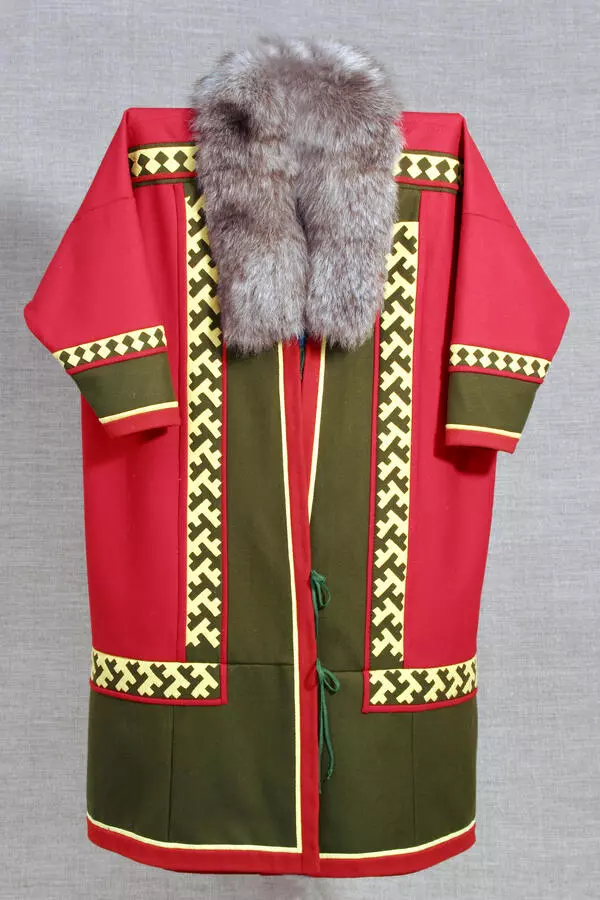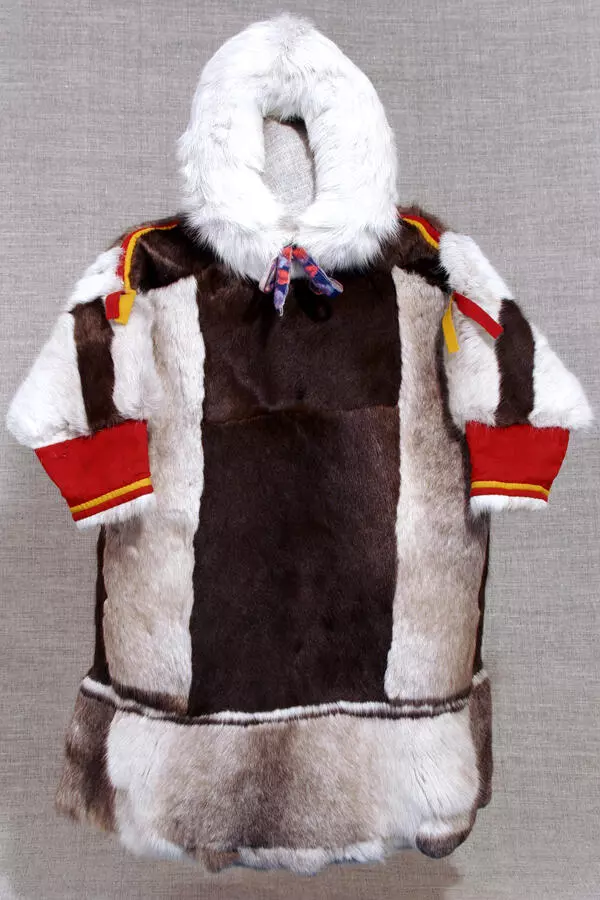The Forest NEnets live in a harsh climate, warm clothing made of reindeer skins and fur helping them to survive the cold. In winter, men wear mAlitsas, women wear yagUshkas. These coats are well suited for their nomadic way of life.
A ‘yagushka’ coat is made of reindeer skins with a lining with fur inside. It is decorated with ornament of light and dark kamus, fur taken from reindeer legs. Usually four summer reindeer skins are required for the coat and the same number of autumn skins for the lining. It is a traditional double upper clothing broadening to the bottom. Unlike a done-up male ‘mAlitsa’ coat, a yagUshka is slitted in the front. This design is determined by the Tundra life conditions: a NEnets woman spends most of her time in a chum, and when she needs to go outside, she simply puts the coat over her shoulders. If there’s a long time to be spent in the cold air, the clothing is buttoned up. A loose coat ensures easy breastfeeding on the move without taking the clothes off. During the stops, a yagUshka is used as a blanket while sleeping.
A female upper clothing is usually worn belted up, the right lap partly covering the left one to keep the maximum of the heat. The special feature of this type of clothing is that there’re no vertical seams, all main junctions are horizontal. A yagUshka collar is made of blue or red fox fur and it serves not only as a decoration but also protection from wind and chill. Cloth or suede laces are sewn to the lapels, seven at each side. They are tied inside the coat. Mittens are sewn to the sleeves with slots at the wrist level, so that one could pull out the hands.
The coat is richly decorated with national ornaments. The process of sewing a winter yagushka is lasting and arduous, it takes a year or two and requires lots of patience and work of the tailor. The smart yagushka made of white fur with a broad dark lap is stored in the fund of Gubkinsky Museum of the Development of the North. The coat is artfully decorated with a pattern of red cloth, its collar is made of red fox fur. This yagushka is made by the skillful Forest Nenets Tatyana Pyak, a Rychi-Yakha camp resident.
A ‘yagushka’ coat is made of reindeer skins with a lining with fur inside. It is decorated with ornament of light and dark kamus, fur taken from reindeer legs. Usually four summer reindeer skins are required for the coat and the same number of autumn skins for the lining. It is a traditional double upper clothing broadening to the bottom. Unlike a done-up male ‘mAlitsa’ coat, a yagUshka is slitted in the front. This design is determined by the Tundra life conditions: a NEnets woman spends most of her time in a chum, and when she needs to go outside, she simply puts the coat over her shoulders. If there’s a long time to be spent in the cold air, the clothing is buttoned up. A loose coat ensures easy breastfeeding on the move without taking the clothes off. During the stops, a yagUshka is used as a blanket while sleeping.
A female upper clothing is usually worn belted up, the right lap partly covering the left one to keep the maximum of the heat. The special feature of this type of clothing is that there’re no vertical seams, all main junctions are horizontal. A yagUshka collar is made of blue or red fox fur and it serves not only as a decoration but also protection from wind and chill. Cloth or suede laces are sewn to the lapels, seven at each side. They are tied inside the coat. Mittens are sewn to the sleeves with slots at the wrist level, so that one could pull out the hands.
The coat is richly decorated with national ornaments. The process of sewing a winter yagushka is lasting and arduous, it takes a year or two and requires lots of patience and work of the tailor. The smart yagushka made of white fur with a broad dark lap is stored in the fund of Gubkinsky Museum of the Development of the North. The coat is artfully decorated with a pattern of red cloth, its collar is made of red fox fur. This yagushka is made by the skillful Forest Nenets Tatyana Pyak, a Rychi-Yakha camp resident.
